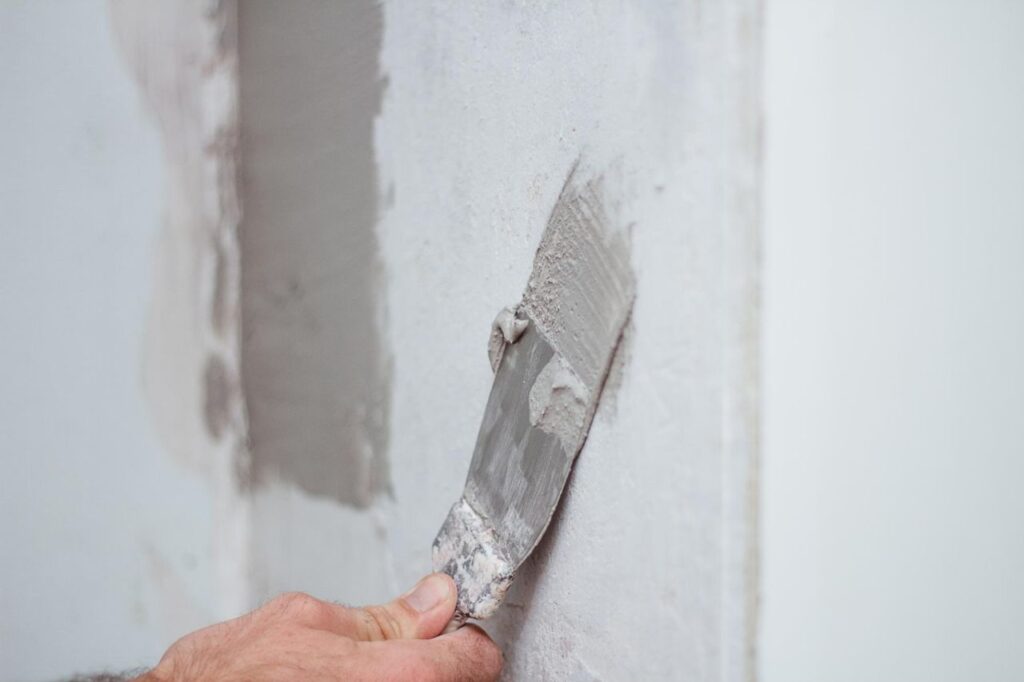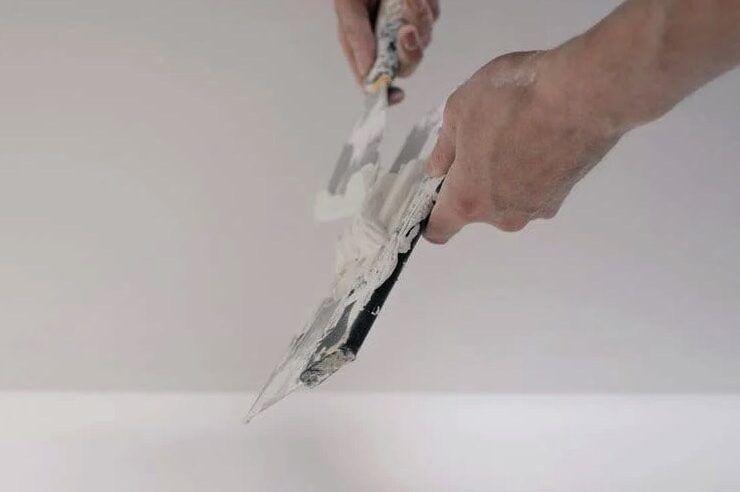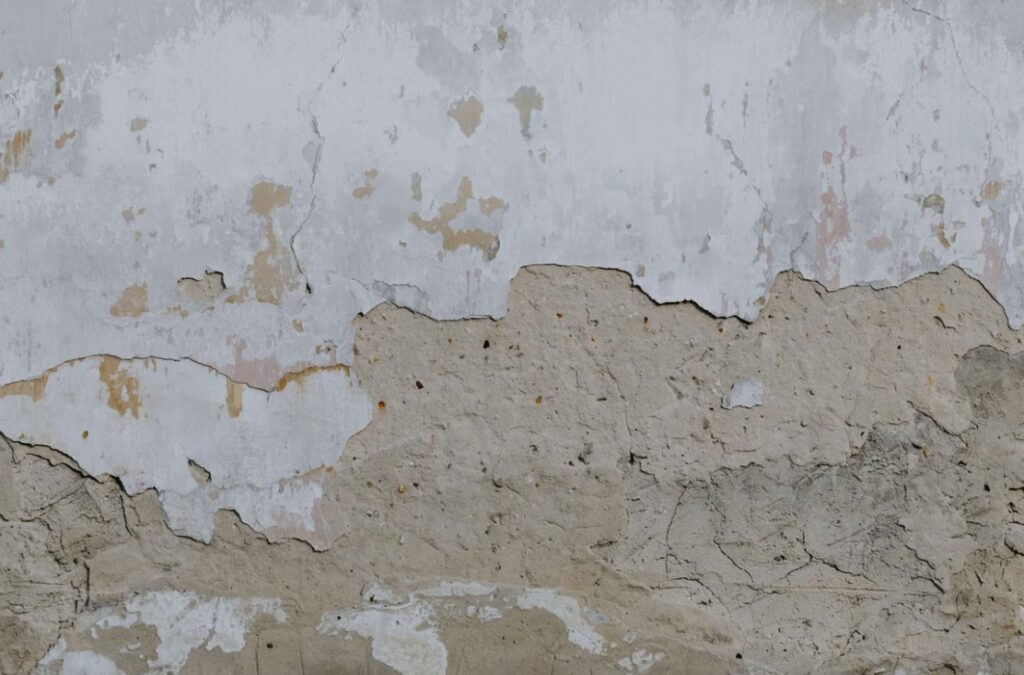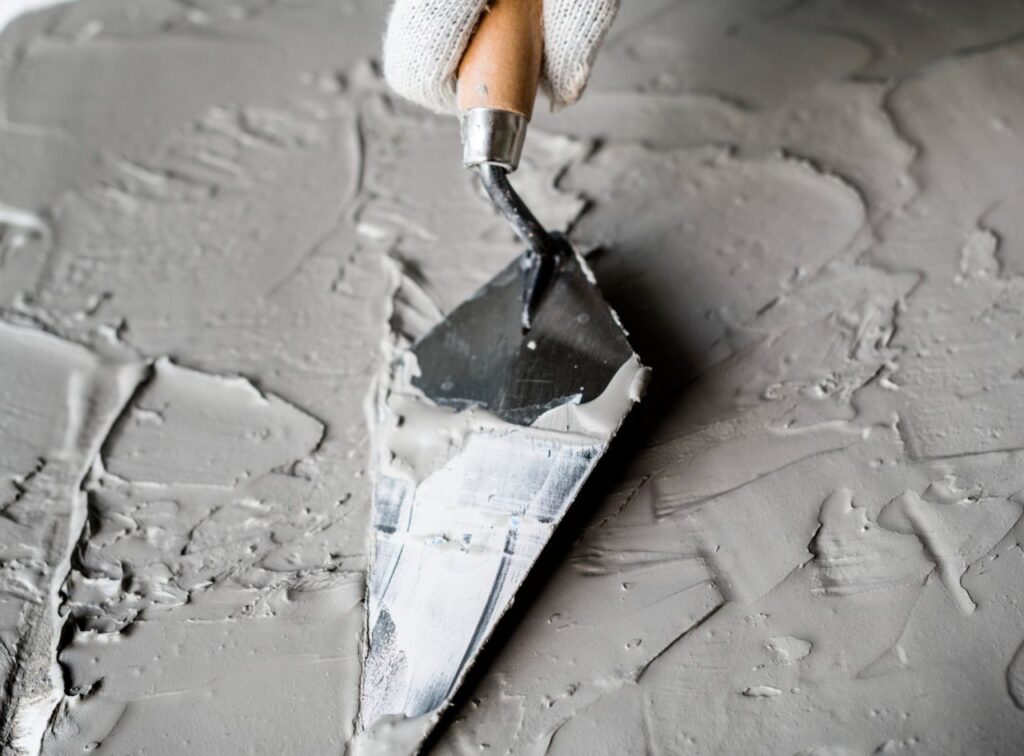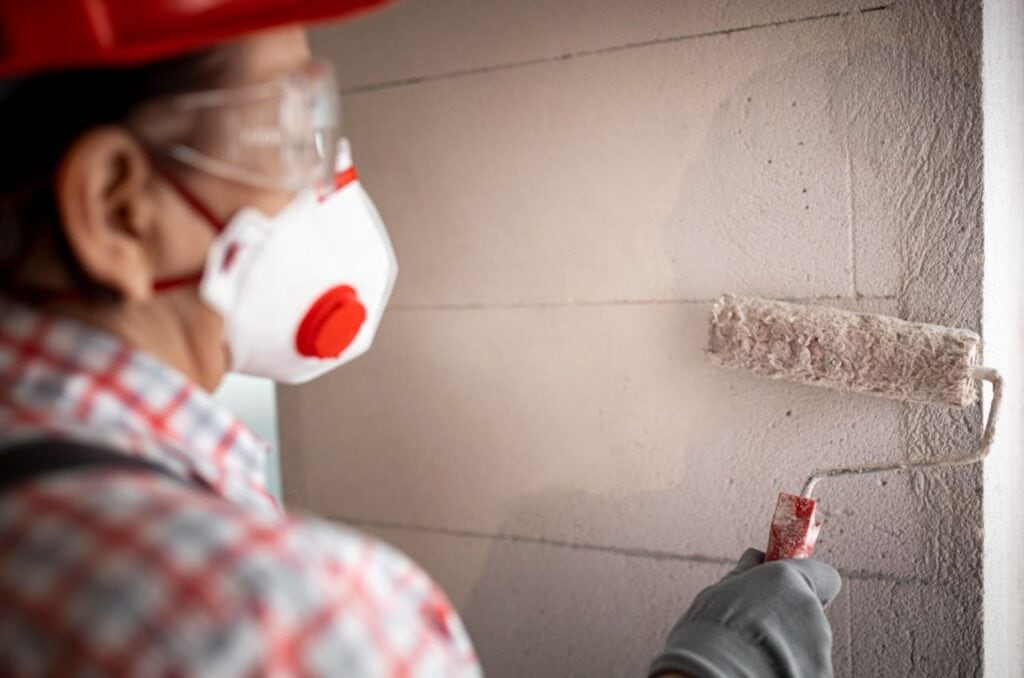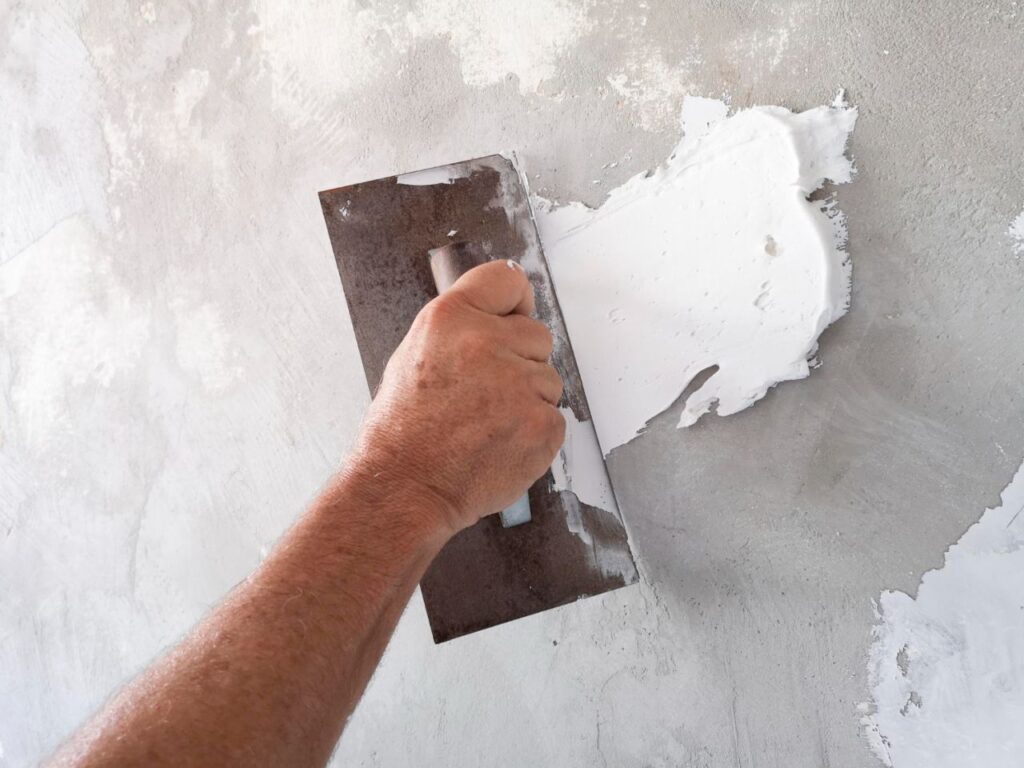In this article, we'll address some of the most frequently asked questions regarding the setup of plasterboards. Anyone interested in learning more about the different kinds of plasterboard on the market or figuring out which board would be ideal for a specific project can benefit from reading this guide.
In today's market, you can find the ideal plasterboard for your home from among many different types and textures. Choosing the right kind of plasterboard can also help you save money on repairs and renovations. With the information in this article, you'll be able to make an informed decision and find a board that works for you.
What Exactly Is Plasterboard?
Sheets of plasterboard are commonly used in building and remodelling projects. Drywall refers to the process of making plasterboard, while plasterboard is the finished product. To get a high-quality finish, you can use wet plastering.
It's an excellent option for use on any wall inside the home and offers numerous advantages. Skin boards, Lightweight boards, and high performance boards are just some of the various varieties of plasterboard available.
Types of Plasterboard
Several varieties of plasterboard are discussed in greater detail here. Plasterboard fasteners are an option you have when choosing your plasterboard. Use these anchors to secure the sheetrock of your choosing.
Water Resistant Plasterboards
Kitchens and bathrooms frequently make use of water-resistant plasterboard. You can even use it outdoors in protected settings, such as under outdoor furniture like couches and mattresses. The chemicals that make drywall water-resistant are embedded deep within the sheet.
The chemicals in water-resistant drywall also stop moisture from building up on the wall.
If the job is not done properly, the walls may become weak and fall apart in places. Taking down the drywall and starting again would be the only option now. This is not only incredibly inconvenient but also very costly.
Insulated Plasterboards
This insulating board is sometimes called "thermal plasterboards" for short. It's common in many different types of buildings, from residences to businesses to factories, because of the superior protection it provides from the elements.
The energy efficiency it delivers may be maintained at a low cost.
Fire Resistant Plasterboard
It's a special kind of wallboard that won't let the fire spread through materials like wood. However, each fireproof plasterboard has a different product rating, which can affect the level of safety it provides. It's possible that these materials can resist fire for up to two hours.
Drywall with built-in fire and heat protection is made from the concrete board with a plaster facing that is occasionally strengthened with glass fibres or other additives.
Acoustic Plasterboard
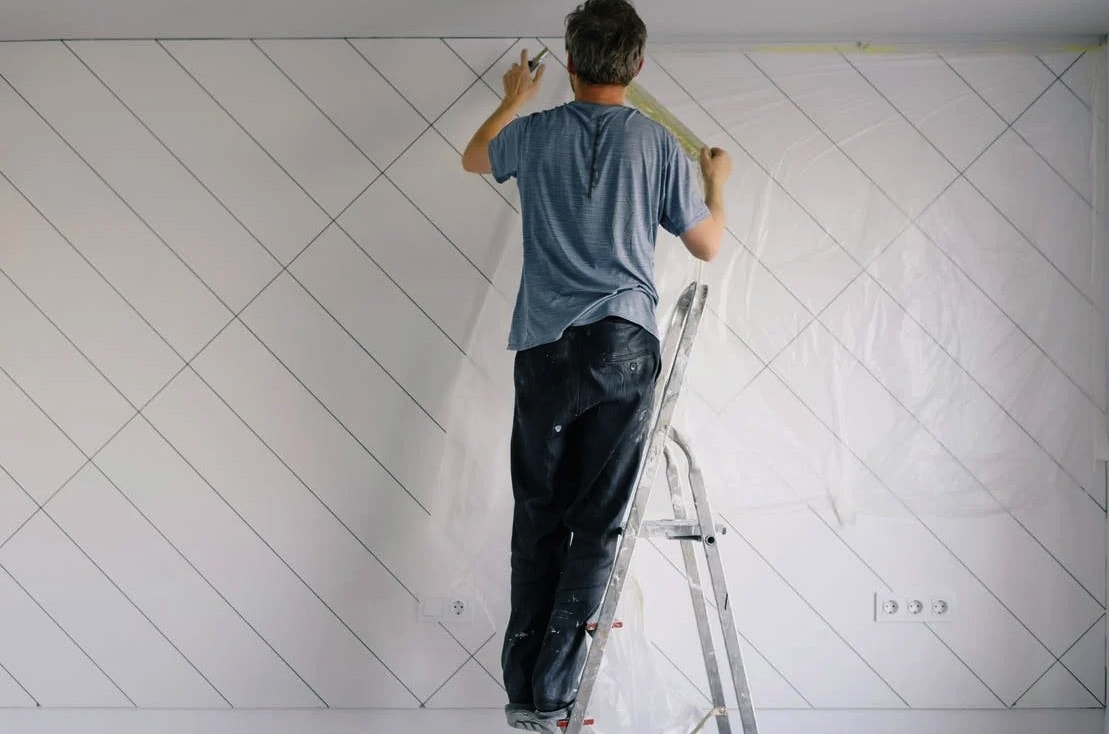
Professional sound is reduced to a minimum with the use of an acoustic plasterboard. Its thickness of around 12.5 mm helps to dampen sound transmission through the roof and walls.
Such rooms, along with home theatres and meeting rooms, are where you'll most often find them installed. Plasterboard that combines concrete with recycled fibres is the most effective material for reducing noise.
Impact Resistant Plasterboard
High-density impact-resistant plasterboard has increased durability, strength, and load-bearing capacity over standard plasterboard. Pure gypsum plasters with varied additives like limestone chippings and cement are responsible for these characteristics.
Its intended function is to seal off empty spaces in walls during construction. The density and number of additives has a role in how long it lasts. The quality criteria for this product are defined by BS 5234, a British standard.
What Sizes of Plasterboard Are Available?
Plasterboard comes in a wide range of sizes that are determined by several criteria. Ceilings and walls are typically a different size. The type of plasterboard you use is also a factor. Plasterboard comes in a variety of sizes, and it's helpful to be aware of those sizes before making a purchase.
Plasterboard sheets are typically available in widths of 0.9 to 1.2 metres and lengths of 1.8 to 3.6 metres.
Plasterboards can have varying thicknesses depending on their applications. Plasterboards can vary in thickness from 9.5 to 12 millimetres. Plasterboards designed to withstand flames can be up to 15 millimetres thick, compared to the typical 12 millimetres for walls and 12.5 millimetres for ceilings.
The ceiling of a bathroom could be constructed with plasterboard of either 12 or 12.5 millimetres in thickness.
But, these can be altered, so they will look different from house to house. When it comes to insulation, some homeowners opt to build with thicker plasterboard. Moreover, plastered ceilings in rooms over garages or lofts may be required to lessen the amount of noise transference from the garage or loft into the living quarters below.
What Are the Finest Ceiling Plasterboards to Use?
Waterproof plasterboard is the material of choice for a typical home ceiling. If the ceiling's sound insulation capabilities are not crucial, then it is recommended to use lightweight acoustic plasterboard for ceilings with light construction or wooden joists.
There are times when acoustic plasterboards or fireproof plasterboards are called for, both of which work to dampen ambient noise. For ceilings thinner than 7.5 inches, regular wallboard will do. However, an acoustic plasterboard is recommended if you have a higher ceiling and wish to minimise noise.
What Plasterboard to Use for the Bathroom?
In this part, we'll discuss why it's important to use plasterboard that can withstand moisture in a bathroom. We'll go through how this particular variety of wallboard can be put to good use in a lavatory. Plasterboard that can withstand moisture or water is the finest and only option for a bathroom.
Plasterboard that is not water resistant can be damaged or weakened by prolonged exposure to moisture, making it unsuitable for use in wet environments like bathrooms. This drywall is waterproof because it has silicone additives and water-repellent liners.
What Plasterboard to Use for Ceilings?
The best ceiling plasterboard will be discussed today. We'll also go over some of the advantages of using this specific drywall. Ceilings should initially be constructed using standard plasterboard or wallboard.
The thickness of the wallboard you buy is also important for your ceiling. Choose a plasterboard that is resistant to water if the ceiling will be above a bathroom or kitchen; this will prevent mould and mildew growth.
If your ceiling is very flimsy, acoustic plasterboard might be used to dampen noise transmission to the space above.
Are Plasterboards Needed in Plastering Walls?
It's not always necessary to use plasterboards when plastering walls, but they can be useful.
Large sheets of pressed gypsum plaster between two sheets of paper are what we call "plasterboards," "drywall," or "gypsum boards." They are widely employed in today's building practises because of how quickly and easily they can produce flat and uniform surfaces like walls and ceilings.
Plasterboards are used as a base layer before applying plaster to walls. They can also be used to create partitions or dividing walls, as well as to cover up broken or uneven walls.
Plastering a wall, however, can be done without the use of plasterboards. Applying a wet plaster mixture straight to the wall is what's known as "wet plastering" or "traditional plastering." While wet plastering can be more of a hassle than using plasterboards, the end result is often more attractive and durable.
Plasterboards aren't necessary for every project, and whether or not you choose to use them relies on factors including your tastes, money, and the nature of the work at hand.
Why Are Plasterboards Being Used?
Drywall and gypsum board are two other names for plasterboards, both of which are commonly used in the construction sector. Plasterboards are used for many purposes, including the ones listed below:
- Plasterboards are a favourite of construction professionals because of how quickly and easily they can be installed. They are available in large sheets that may be easily cut to size and installed, saving both time and money.
- Walls, ceilings, partitions, and even fire-rated assemblies can all benefit from using plasterboards due to their adaptability. They can be used to make circular or curved walls and can be textured or painted to produce the desired effect.
- Plasterboards, when installed properly, can provide excellent sound absorption and fire protection. They come in fire-rated varieties that can provide up to four hours of fire resistance and can be placed with insulation to improve soundproofing.
- Plasterboards are constructed from long-lasting materials that are impervious to water damage, mildew, and mould. They are also resistant to damage from drops and weight, making them an excellent choice for busy thoroughfares.
- Economical: Plasterboards are often a better value than the time and effort required for traditional plastering processes. They are cheap because they are easily accessible and can be bought in bulk.
Plasterboards are a good choice for soundproofing and fireproofing because of their adaptability, low cost, and high efficiency. Because of their strength and resilience, they are frequently used in building projects of all sizes.
Pros and Cons of Plasterboard
Plasterboards, commonly called drywall or gypsum board, are widely used in construction because of their many benefits. Plasterboards, like any other building material, are not without their drawbacks, though. The benefits and drawbacks of plasterboards are discussed in greater depth below.
Pros
Plasterboards are quick and simple to install because of their low weight and manageability. Time and money are saved due to their simple customization and straightforward installation.
Walls, ceilings, partitions, and even fire-rated assemblies can all benefit from using plasterboards due to their adaptability. They can be used to make circular or curved walls and can be textured or painted to produce the desired effect.
Plasterboards, when installed properly, can provide excellent sound absorption and fire protection. They come in fire-rated varieties that can provide up to four hours of fire resistance and can be placed with insulation to improve soundproofing.
Plasterboards are constructed from long-lasting materials that are impervious to water damage, mildew, and mould. They are also resistant to damage from drops and weight, making them an excellent choice for busy thoroughfares.
Economical: Plasterboards are often a better value than the time and effort required for traditional plastering processes. They are cheap because they are easily accessible and can be bought in bulk.
Cons
Plasterboards are susceptible to water damage and may need to be replaced if they have been exposed to damp for an extended period of time. This is especially a concern in damp environments like kitchens and bathrooms.
Plasterboards are prone to cracking if they are not installed correctly or if they are subjected to excessive movement or vibration. This is especially a concern in older structures or in regions with frequent earthquakes.
While plasterboards are sturdy, they do not endure as long as the classic variety of plaster. If they are subjected to a lot of wear and tear, they may need to be replaced more often.
It might be difficult to repair damage to plasterboard without replacing the entire board. This can be a costly and time-consuming endeavour, especially if the board is in an inconvenient location.
Plasterboards are not environmentally friendly because they are manufactured using gypsum, a nonrenewable resource.
Greenhouse gases and other forms of air pollution may be released throughout the manufacturing process.
Plasterboards are a great option because of their many benefits, such as their low price, long lifespan, and less environmental impact.
Water damage is a real possibility, and they tend to fracture and not last as long as regular plaster does.
They're also not as easily repaired and aren't good for the environment. When settling on plasterboards as a construction material, it's crucial to give thought to the project's unique requirements.
Conclusion
In this article, we'll look at the various plasterboard options available and how to pick the best one for your needs. All the different types of plasterboard are explained, from skin boards to lightweight to high performance.
Plasterboard comes in a variety of forms, some of which are resistant to water, heat, and flames. Insulating plaster boards are common in many buildings, while water-resistant plasterboard is typically used in kitchens and bathrooms.
Fireproof plasterboard is a type of wallboard that prevents the spread of fire through combustibles like wood, but different brands have different fire ratings.
Fireproof drywall is constructed from concrete board with a plaster facing, which is sometimes reinforced with glass fibres or other additives. Impact-resistant plasterboard is more long-lasting, strong, and load-bearing than regular plasterboard, while acoustic plasterboard is the best at dampening ambient noise.
Different uses call for different thicknesses and sizes of plasterboard. Standard residential ceilings are typically made of waterproof plasterboard, while ceilings with light construction or wooden joists should use lightweight acoustic plasterboard. Using acoustic plasterboards or fireproof plasterboards is emphasised as the most crucial information in this text.
Only water-resistant plasterboard should be used in a bathroom, as regular plasterboard can deteriorate after being exposed to humidity for too long. Standard plasterboard or wallboard should be used to construct ceilings at first, and the thickness of the wallboard is also significant.
Plasterboards have many uses besides just repairing holes and uneven surfaces on walls. It is possible to plaster a wall without using plasterboards, but using them typically produces a more attractive and long-lasting finish. Plasterboards are widely used in the building industry because of their useful features.
The affordability, versatility, sound absorption, and fire protection make them a favourite among construction professionals. Because of their durability and resistance to heat and flame, they are also effective as a sound barrier and fire barrier.
Plasterboards have many advantages, including their light weight and ease of handling, the time and money savings that come from their adaptability, and the fact that they can be moulded into any shape and painted or textured to achieve the desired look.
Plasterboards, because of their versatility, low cost, and high efficiency, are a good choice for soundproofing and fireproofing. Plasterboards are an excellent building material because they cost less, last longer, and have a smaller impact on the environment.
They are available in fire-resistant varieties that offer protection from flames for up to four hours and can be insulated for enhanced soundproofing. They are made from durable materials that are resistant to mildew, mould, and water.
They can withstand being dropped or walked on, making them great for high-traffic areas.
However, they can be easily damaged by moisture, and if left damp for too long, they may need to be replaced.
They're bad for the ecosystem and don't hold up as well in repairs. Plasterboards are a common building material, but each project has its own set of specifications that must be taken into account before a final decision can be made.
Content Summary
- Anyone interested in learning more about the different kinds of plasterboard on the market or figuring out which board would be ideal for a specific project can benefit from reading this guide.
- In today's market, you can find the ideal plasterboard for your home from among many different types and textures.
- Choosing the right kind of plasterboard can also help you save money on repairs and renovations.
- Skin boards, Lightweight boards, and high performance boards are just some of the various varieties of plasterboard available.
- Several varieties of plasterboard are discussed in greater detail here.
- Plasterboard fasteners are an option you have when choosing your plasterboard.
- The chemicals that make drywall water resistant are embedded deep within the sheet.
- The chemicals in water-resistant drywall also stop moisture from building up on the wall.
- Professional sound is reduced to a minimum with the use of acoustic plasterboard.
- High density impact resistant plasterboard has increased durability, strength, and load-bearing capacity over standard plasterboard.
- The type of plasterboard you use is also a factor.
- When it comes to insulation, some homeowners opt to build with thicker plasterboard.
- There are times when acoustic plasterboards or fireproof plasterboards are called for, both of which work to dampen ambient noise.
- However, an acoustic plasterboard is recommended if you have a higher ceiling and wish to minimise noise.
- What Plasterboard to Use for the Bathroom?
- Plasterboard that can withstand moisture or water is the finest and only option for a bathroom.
- What Plasterboard to Use for Ceilings?
- We'll also go over some of the advantages of using this specific drywall.
- The thickness of the wallboard you buy is also important for your ceiling.
- Choose plasterboard that is resistant to water if the ceiling will be above a bathroom or kitchen; this will prevent mould and mildew growth.
- Plasterboards aren't necessary for every project, and whether or not you choose to use them relies on factors including your tastes, money, and the nature of the work at hand.
- Plasterboards are a good choice for soundproofing and fireproofing because of their adaptability, low cost, and high efficiency.
- Because of their strength and resilience, they are frequently used in building projects of all sizes.
- Plasterboards, commonly called drywall or gypsum board, are widely used in construction because of their many benefits.
- The benefits and drawbacks of plasterboards are discussed in greater depth below.
- Plasterboards are quick and simple to install because of their low weight and manageability.
- Plasterboards, when installed properly, can provide excellent sound absorption and fire protection.
- Plasterboards are constructed from long-lasting materials that are impervious to water damage, mildew, and mould.
- Plasterboards are often a better value than the time and effort required for traditional plastering processes.
- While plasterboards are sturdy, they do not endure as long as the classic variety of plaster.
- Plasterboards are a great option because of their many benefits, such as their low price, long lifespan, and less environmental impact.
- They're also not as easily repaired and aren't good for the environment.
- When settling on plasterboards as a construction material, it's crucial to give thought to the project's unique requirements.
Frequently Asked Questions About Plasterboard
Gypsum plaster is used to create plasterboards, also known as drywall or gypsum board, which consists of two layers of thick paper or fibreglass matting. Gypsum rock, a naturally occuring mineral, is heated to high temperatures and then ground into a fine powder to produce the gypsum plaster.
Plaster is a building material that can be used to create a smooth, even surface on walls or ceilings by layering a mixture of water, sand, lime, or cement. Plasterboard, on the other hand, is a prefabricated panel with a gypsum plaster core and either a heavy paper or fibreglass matting surface. Plasterboard is typically installed more quickly and with less difficulty than traditional plaster, but its durability is not always guaranteed.
There is a wide range of thicknesses available for plasterboards; however, 9.5mm and 12.5mm are the most frequently used. The need for soundproofing and fireproofing will determine the optimal thickness of the plasterboard to be used. The insulating and quieting effects of plasterboards can be enhanced by making them thicker.
Once the surface is properly prepared, plasterboard can be painted. Plasterboard that will be painted should have its surface sanded and cleaned to remove any dust or debris, and then primed to improve paint adhesion. Make sure to follow the manufacturer's instructions when selecting and applying paint to the plasterboard.
Spackle or joint compound can be used to fill small holes in plasterboard; it is applied with a putty knife and sanded smooth once it has dried. Plasterboard can be cut to size and used as a patch for any holes larger than a pencil. Once dry, joint compound can be used to permanently adhere the patch in place before being sanded to a smooth finish. Before sanding or painting, make sure the joint compound has dried completely.
